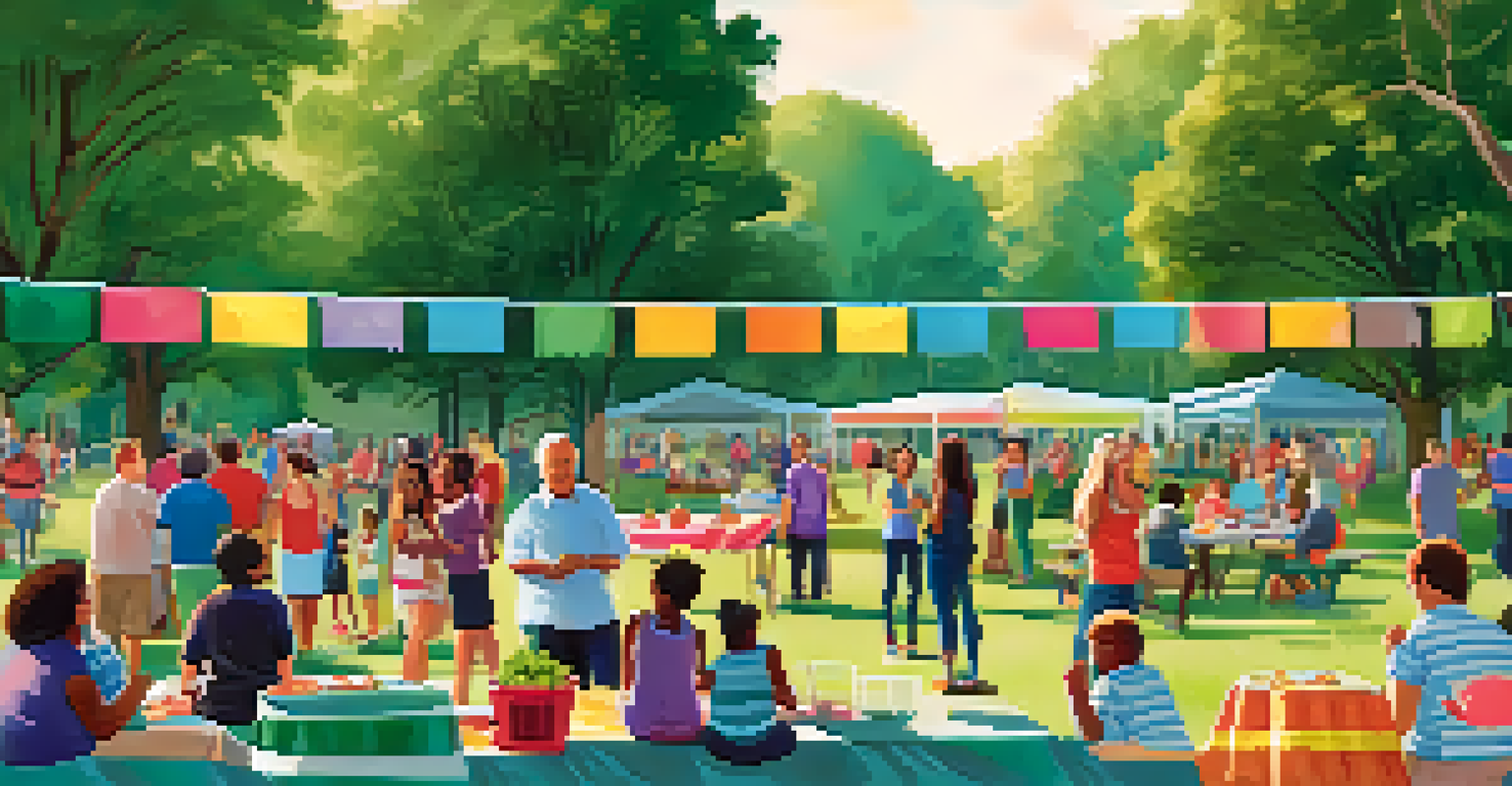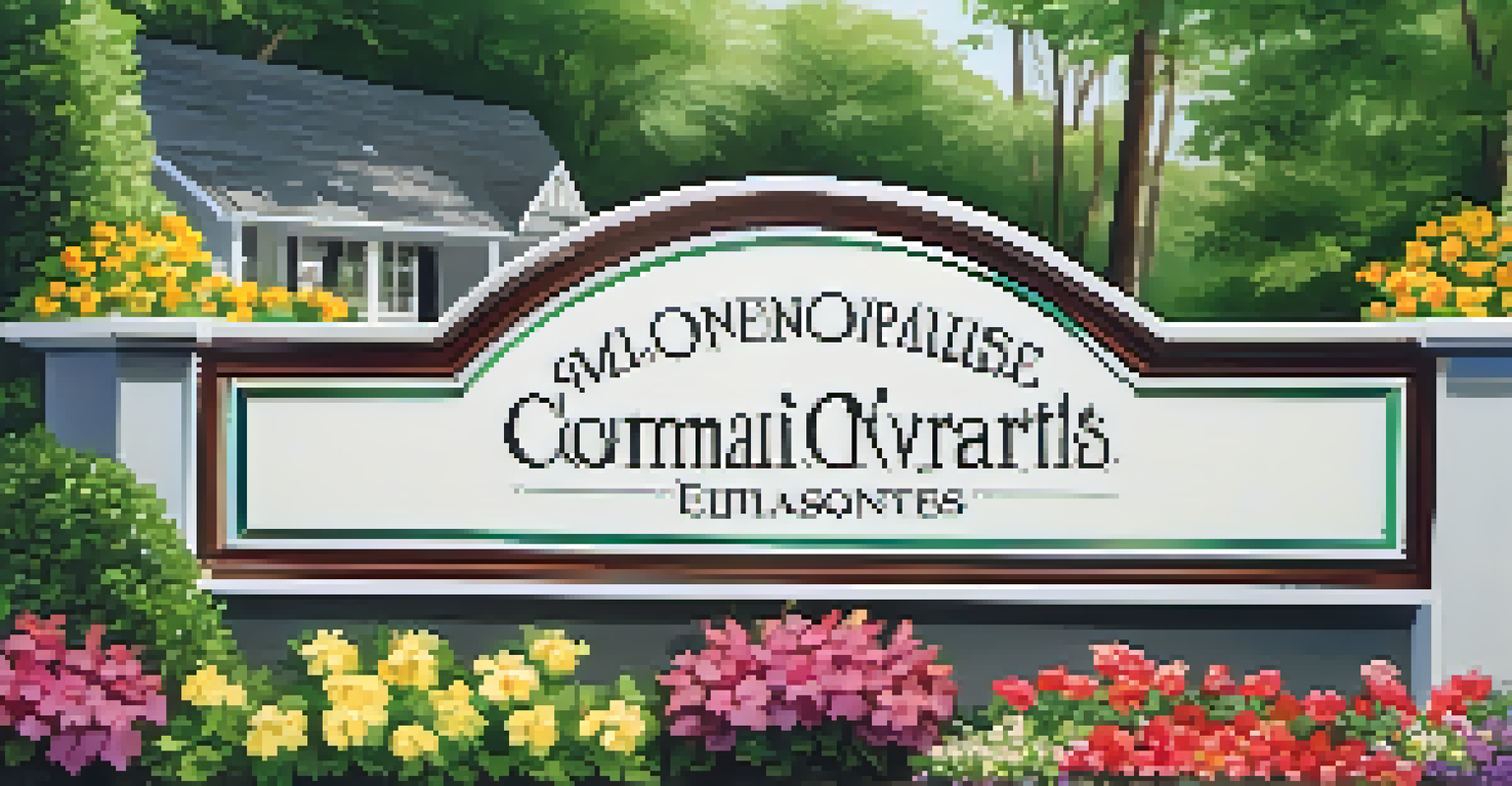Understanding the Impact of HOAs on Community Diversity

What Are Homeowners Associations (HOAs) and Their Role?
Homeowners Associations, or HOAs, are organizations in residential communities that enforce rules and regulations. They are typically formed by developers to maintain property values and ensure a certain aesthetic throughout the neighborhood. By collecting dues, HOAs fund community amenities and services, like parks and pools, which can enhance the living experience for residents.
Diversity is not about how we differ. Diversity is about embracing one another's uniqueness.
However, while HOAs aim to foster a pleasant living environment, they can also impose restrictions that may not align with the preferences of all residents. For example, some HOAs may have strict guidelines regarding home exteriors, landscaping, and even the types of vehicles allowed in driveways. These regulations can inadvertently create an environment that feels less inclusive for diverse populations.
Understanding the dual role of HOAs is crucial for recognizing their impact on community diversity. On one hand, they provide structure and support community spirit; on the other, they may unintentionally limit the variety of voices and lifestyles within a neighborhood. This balance is essential to examine as we delve deeper into the subject.
The Influence of HOA Regulations on Demographics
HOA regulations can significantly shape the demographic makeup of a community. For instance, if an HOA enforces high property standards or expensive membership fees, it may exclude lower-income families from moving in. This can lead to a homogenous community where economic diversity is limited, impacting the overall vibrancy of the neighborhood.

Moreover, these regulations can affect the types of homes built in the community. If an HOA favors single-family homes over multi-family units, it can restrict options for families of varying sizes and backgrounds. This can create a ripple effect, reducing the chances for diverse families to establish roots in the area.
HOAs Shape Community Dynamics
Homeowners Associations influence property values and community diversity through their regulations and governance.
As a result, the influence of HOAs on demographics can often lead to a lack of representation for different cultures and lifestyles. This often means fewer opportunities for residents to engage with a broad array of perspectives, which can enrich the community experience.
Community Engagement and HOAs: A Double-Edged Sword
One of the primary goals of an HOA is to foster community engagement among residents. This can manifest in various ways, such as neighborhood events, maintenance days, and social gatherings, all designed to strengthen community bonds. However, the effectiveness of these initiatives can vary significantly based on the HOA's approach and the willingness of residents to participate.
The strength of the team is each individual member. The strength of each member is the team.
While some HOAs may excel in encouraging participation, others may inadvertently create an exclusive environment where only certain groups feel welcome to engage. For instance, if community events cater primarily to families, single individuals or older residents might feel left out. This exclusion can diminish the richness of community interactions and limit the diverse experiences shared among residents.
Finding the right balance in community engagement initiatives is essential for fostering inclusivity. HOAs that actively seek input from all residents and tailor events to reflect diverse interests are more likely to create a sense of belonging for everyone.
The Pros and Cons of HOA Governance
HOAs have their pros and cons, especially when it comes to governance and community standards. On the positive side, they can help maintain property values, promote a clean environment, and create a sense of order through established rules. These factors can enhance the attractiveness of a community, appealing to prospective residents and investors alike.
However, the downside is that strict governance can stifle individuality and diversity. Some residents may feel that the rules are overly restrictive, leading to frustration and a sense of disenfranchisement. This can create tension within the community, as differing opinions on regulations can clash, ultimately affecting the overall harmony.
Balancing Inclusivity and Standards
Finding a balance in HOA policies can promote inclusivity, allowing diverse voices and lifestyles to thrive in communities.
In essence, the governance of HOAs can be a double-edged sword. While they can bring structure and appeal, they must also navigate the fine line between order and inclusivity to truly benefit the diverse community.
The Role of HOAs in Shaping Neighborhood Identity
HOAs play a crucial role in shaping the identity of a neighborhood. For many, the image of a well-kept community with manicured lawns and uniform aesthetics reflects a desirable lifestyle. This can attract new residents who seek that specific lifestyle, ultimately influencing the neighborhood's character and identity.
However, this pursuit of a particular identity can also lead to the exclusion of those who don't fit that mold. For example, a community that values traditional architectural designs might inadvertently push away those interested in modern or eclectic styles. This limitation can create a less diverse atmosphere, as differing preferences and backgrounds are not represented.
Therefore, while HOAs can help define a community's identity, it's essential for them to remain open to various influences. Embracing a broader range of ideas and styles can ultimately enrich the neighborhood and create a more inclusive identity.
Finding the Balance: Inclusivity in HOA Policies
To promote diversity within communities governed by HOAs, it's vital to find a balance in policy-making. HOAs can implement guidelines that encourage inclusivity, such as flexible architectural standards or community engagement initiatives that cater to a variety of demographics. By doing so, they can create an environment where all residents feel represented and valued.
Moreover, involving community members in policy decisions can lead to more equitable outcomes. When residents from diverse backgrounds have a voice in shaping rules, the resulting policies are more likely to reflect the community's true needs and desires. This collaborative approach can create a sense of ownership and pride among residents.
Successful Diverse Communities Exist
Case studies show that inclusive practices within HOAs can lead to vibrant, diverse neighborhoods that enhance resident satisfaction.
Ultimately, fostering inclusivity in HOA policies can lead to a richer, more vibrant community. When everyone feels welcome, it not only enhances the neighborhood's character but also encourages positive interactions among residents, creating lasting relationships.
Case Studies: Successful Diverse Communities with HOAs
Examining case studies of successful diverse communities can provide valuable insights into the positive impact of HOAs. For instance, some neighborhoods have implemented inclusive practices, such as allowing a mix of housing types, which attracts a broader range of residents. This approach not only enriches the community but also enhances property values through diversity.
In one notable example, a community created an advisory board that included residents from various backgrounds to ensure that all voices were heard in HOA decisions. This initiative not only improved the inclusivity of the community but also fostered a stronger sense of belonging among residents, leading to more robust community ties.

These successful case studies demonstrate that when HOAs prioritize inclusivity, they can create vibrant and diverse communities that thrive. By learning from these examples, other HOAs can adopt similar strategies to enhance their neighborhoods and embrace diversity.